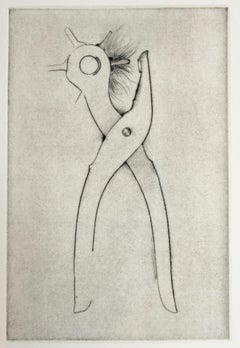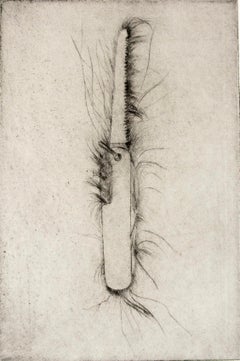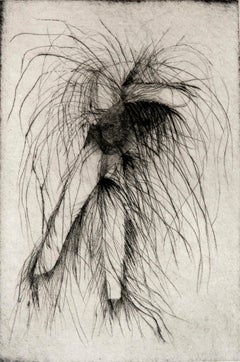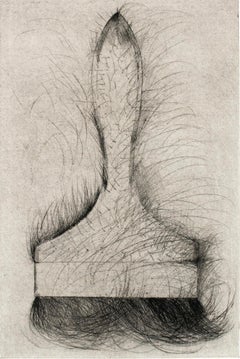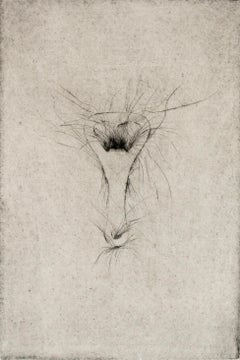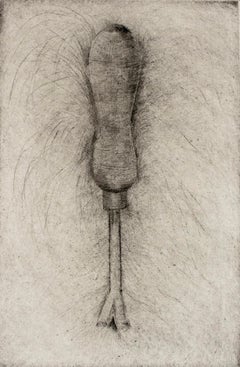30 Bones Of My Body Portfolio
1970s Pop Art Figurative Prints
Drypoint
1970s Pop Art Figurative Prints
Drypoint
1970s Modern Figurative Prints
Drypoint
1970s Modern Figurative Prints
Drypoint
1970s Modern Figurative Prints
Drypoint
1970s Modern Figurative Prints
Drypoint
1970s Modern Figurative Prints
Drypoint
Recent Sales
1970s Modern Figurative Prints
Drypoint
People Also Browsed
Mid-20th Century French Neoclassical Benches
Bronze, Wrought Iron
21st Century and Contemporary Swedish Mid-Century Modern Table Lamps
Textile
2010s American Mid-Century Modern Wall Lights and Sconces
Nickel, Enamel, Bronze, Brass, Aluminum
2010s American Mid-Century Modern Table Lamps
Brass
2010s French Collectible Jewelry
Vermeil, Silver, Sterling Silver
2010s Belgian Modern Sofas
Linen
Antique 19th Century Italian Wardrobes and Armoires
Pine
2010s Italian Greek Revival Benches
Leather, Walnut
Vintage 1950s Italian Mid-Century Modern Armchairs
Brass
Vintage 1970s Swedish Scandinavian Modern Armchairs
Brass
21st Century and Contemporary Italian Wall Lights and Sconces
Brass
Vintage 1950s American Mid-Century Modern Chairs
Metal
Vintage 1960s Italian Mid-Century Modern Desks and Writing Tables
Brass
2010s Abstract Abstract Sculptures
Metal
1970s Abstract Expressionist Abstract Prints
Etching
Jim Dine for sale on 1stDibs
The Ohio-born artist Jim Dine brought his ever-shifting, multidisciplinary vision to New York in 1958, a time of transition in the American art world. Abstract Expressionism, which had dominated the scene for years, was on the wane, and a group of young artists, including Dine, Allan Kaprow, Jasper Johns and Robert Rauschenberg, was eager to replace it with a movement that flipped the traditional rules of art-making on their head.
Beyond dissolving the boundaries between mediums and genres, attaching found objects and detritus to their canvases, these revolutionaries began staging performative “happenings” in public spaces, redefining the very definition of a work of art. As Pop art took form, Dine used objects with personal significance, like his paintbrushes, to transform his paintings into two-dimensional sculptures. He was included in the Norton Simon Museum’s 1962 “New Painting of Objects,” often considered the first true Pop art exhibition in America, but he remained a chameleon, constantly changing his style, material and technique.
More than his contemporaries, Dine has forged new paths in drawing, scrawling words and names across the canvas to create graphic, abstract landscapes. He is obsessed by certain motifs — such as hearts and his own bathrobe — which recur in various forms throughout his oeuvre. He has occasionally worked in classical genres, such as portraiture, as exemplified by the 1980 aquatint Nancy Outside in July. He has also co-opted the bold, graphic vocabulary of advertising and commercials, as in the sleek 2010 composition Gay Laughter at the Wake.
Find Jim Dine prints and other art on 1stDibs.
Finding the Right Figurative-prints-works-on-paper for You
Bring energy and an array of welcome colors and textures into your space by decorating with figurative fine-art prints and works on paper.
Figurative art stands in contrast to abstract art, which is more expressive than representational. The oldest-known work of figurative art is a figurative painting — specifically, a rock painting of an animal made over 40,000 years ago in Borneo. This remnant of a remote past has long faded, but its depiction of a cattle-like creature in elegant ocher markings endures.
Since then, figurative art has evolved significantly as it continues to represent the world, including a breadth of works on paper, including printmaking. This includes woodcuts, which are a type of relief print with perennial popularity among collectors. The artist carves into a block and applies ink to the raised surface, which is then pressed onto paper. There are also planographic prints, which use metal plates, stones or other flat surfaces as their base. The artist will often draw on the surface with grease crayon and then apply ink to those markings. Lithographs are a common version of planographic prints.
Figurative art printmaking was especially popular during the height of the Pop art movement, and this kind of work can be seen in artist Andy Warhol’s extensive use of photographic silkscreen printing. Everyday objects, logos and scenes were given a unique twist, whether in the style of a comic strip or in the use of neon colors.
Explore an impressive collection of figurative art prints for sale on 1stDibs and read about how to arrange your wall art.
- What is Jim Dine famous for?1 Answer1stDibs ExpertAugust 15, 2024Jim Dine is famous for his work as an artist. He brought his multidisciplinary vision to New York in 1958, a time of transition in the American art world. Abstract Expressionism, which had dominated the scene for years, was waning, and a group of young artists, including Dine, Allan Kaprow, Jasper Johns and Robert Rauschenberg, was eager to replace it with a movement that flipped the traditional rules of art-making on its head. As Pop art took form, Dine used objects with personal significance, like his paintbrushes, to transform his paintings into two-dimensional sculptures. He was included in the Norton Simon Museum’s 1962 “New Painting of Objects,” often considered the first true Pop art exhibition in America, but he remained a chameleon, constantly changing his style. Dine has forged new paths in drawing, scrawling words and names across the canvas to create graphic, abstract landscapes. Some of his best-known works include his Tool Box series, Four Hearts, Tinsnip and The Robe. On 1stDibs, shop a range of Jim Dine art.
- Why did Jim Dine paint hearts?1 Answer1stDibs ExpertFebruary 22, 2021Jim Dine painted hearts because he was a self-described romantic artist. He embraced the heart because he believed it was a shape with boundless possibilities and a complex meaning. He explored relationships of color, texture and composition through the heart.
